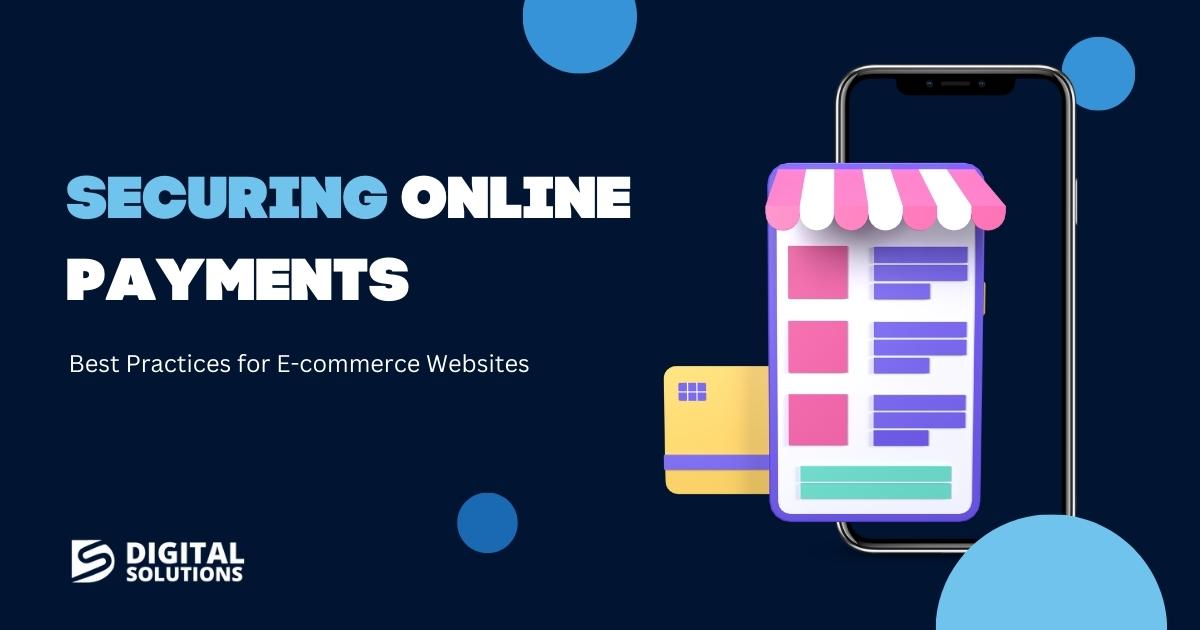- Dec 06, 2023
- Athar Rasool
- No Comments

The convenience of online payments provides a big boost to e-commerce revenue. However, with payments come risks if the proper protections are not implemented. Customers expect their payment details and transactions to be secure when shopping online. Fraud, stolen payment information, and misuse of funds can quickly erode consumer trust and profitability.
That makes Online Payments Security an indispensable part of the payment process on your website. This article outlines steps and technologies to help secure online payments for E-commerce payment protection businesses, protect customers, and avoid regulatory non-compliance. Follow these best Payment security best practices to give visitors peace of mind during checkout while maximizing sales.
SSL/TLS Encryption
The first must-have for payment security is encrypting all connections and pages involved in taking payment details or processing transactions using SSL/TLS. This prevents criminals from intercepting and stealing entered card numbers or personal details during submission. To enable encryption:
– Purchase an SSL certificate from a trusted certificate authority to activate HTTPS and the padlock icon.
– Redirect all payment pages to HTTPS and enable HSTS headers to prevent accidental HTTP access.
– Verify the certificate is valid and covers your exact domain to avoid spoofing.
– Renew certificates before expiration to maintain an active encrypted connection.
– Support TLS 1.2+ and disable outdated SSL protocols to ensure strong ciphers are used.
Mandating HTTPS across payment interactions protects integrity and confidentiality.
Minimize Payment Fields
Collect only essential payment details required for the transaction. Additional unneeded fields create extra sensitive data liabilities. Never collect CVV codes unless absolutely required for the processor. Always mask or truncate displayed card numbers to only show last 4 digits. Minimizing collected fields reduces risks.
Validate All Inputs
Actively filter and sanitize user inputs on payment forms to block injected scripts, invalid data, and uncommon special characters. This prevents attackers from manipulating parameters or exploiting vulnerabilities by submitting malformed payment details. Input validation is a key defensive layer.
Tokenize Credit Card Data
Tokenization exchanges credit card numbers for randomized surrogate values called tokens which get stored instead of actual card numbers. This protects raw payment credentials in the event of a data breach. Retrieve tokens via API when submitting transactions.
Enable Cardholder Authentication
Deploy multi-factor authentication solutions provided by card networks like Visa’s 3D Secure to prompt users for an additional credential when transacting. This verifies identity and provides liability protection in fraud disputes.
Truncate Printed Receipts
If providing printed or emailed receipts, truncate to only show last 4 digits of cards. Never print full card numbers, expire dates or CVV codes on receipts. Follow PCI guidelines to mask printed payment details.
Secure Refunds Rigorously
Issue refunds only to the original card used for payment to prevent abuse. Have strict refund approval procedures applied manually for larger refunds. Automated no-questions-asked refunds open the door to money laundering.
Monitor Transaction Anomalies
Leverage AI and analytics to spot abnormal spikes in sales volumes, international transactions, high-risk IPs, and other anomalies that may indicate fraud. Alert staff to review before fulfillment.
Conduct Regular Vulnerability Scans
Scan for vulnerabilities like SQLi, XSS, insecure misconfigurations, outdated software etc. that could enable payment data breaches. Prioritize patching identified flaws, especially remotely exploitable holes.
Limit Payment Pages’ Attack Surface
Isolate payment pages away from other site content on separate simple URLs like /checkout to minimize potential attack surface. Disable unused plugins and components on payment pages.
Secure Backups
Encrypt payment data backups and securely store encryption keys offline. Backups allow restoration after data corruption or ransomware but also carry inherent risk of exposure.
Control Staff Access
Follow principle of least privilege. Restrict payment data access only to essential staff through role-based access controls. Mask PII in non-production environments.
Maintain PCI-DSS Compliance
Adhere to comprehensive steps mandated by industry standards like PCI Data Online Payments Security Standard and PA DSS for secure payment processing, storage and transmission.
Leverage Fraud Detection Tools
Specialized tools like Signifyd use machine learning algorithms trained on massive datasets to identify signals indicative of fraudulent Secure online transactions for additional scrutiny.
In Summary
Online payments require extra vigilance to secure customer data and prevent fraud while maintaining seamless user experiences. E-commerce payment protection websites can leverage the above measures to protect payments without introducing friction. By following these best practices, online businesses can confidently accept payments knowing critical financial and personal data remains secured through the entire transaction lifecycle. Customers will appreciate the commitment to their security.
Though threats like card skimmers and stolen credentials persist online, proper implementation of encryption, input validation, tokenization, activity monitoring, vulnerability management and other techniques discussed above will serve as a robust defense. Keeping pace with payment security fortifies the trust between your brand and your customers.

Muhammad Athar Rasool, CEO of DS Technologies (Pvt.) LTD, regularly shares his expertise on web development, design, and security, along with insights on IoT and emerging trends. A keen writer, he often expresses his interests, concerns, and opinions on these topics, providing valuable content for those navigating the digital landscape.